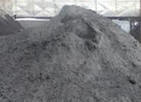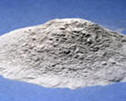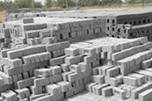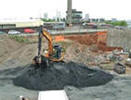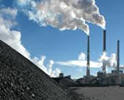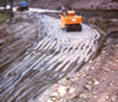Appeal: Please go through the link
and then proceed for the next information
https://www.sciencemag.org/news/2018/10/what-massive-database-retracted-papers-reveals-about-science-publishing-s-death-penalty
Appeal:
Please go through the link and then proceed for the next
information
https://www.sciencemag.org/news/2018/10/what-massive-database-retracted-papers-reveals-about-science-publishing-s-death-penalty
"Handbook
of Fly Ash, Publisher: Elsevier"
"Encyclopaedia of Technological Advancement of Polymer
Composite's Applications, Publisher:
To be finalized"
Section-A: Properties
and Structure of Fly Ash
A1: Fly ash
A2:
Classifications and compositions
including bottom ash and boiler slag
A3: Preparation
A4:
Functionalization
A5: Properties
A6: Handling
A7: Special class of fly ash
-White
-Hydrophobic
-Hollow sphere/cenospheres
-Encapsulation
A8: Production around the globe
A9: Safety and
health issues
A10: Characteristics of fly ash obtained from different sources
A11: Life cycles of fly ash
A12: Extraction of valuable minerals, alloys, compounds
-Carbon (IIT Kanpur)
-Silicon (IIT-Kanpur)
-Inorganic materials and compounds
-Organic and carbon based compounds
A13: Other topics not covered in this section
Section-B: Fly Ash
Reinforced Composites
B1: Synthetic
thermoplastic polymer based composites
B1.1-poly(vinyl
alcohol) B1.2 -poly(acrylonitrile butadiene
styrene)
B1.3-polyethylene
B1.4-polypropylene
B1.5-polypropylene/ethylene-propylene-diene
terpolymer
B1.6-polyesteramide B1.7-polyvinyl chloride
B1.8-polyaniline B1.9-polystyrene
B1.10-polyphenylene sulphide
B1.11-polyester
B1.12-poly(propylene carbonate)
B1.13-polycarbonate
B1.14-poly (methylmethacrylate)
B1.15-poly(acrylonitrile)
B1.16-poly
(acrylic acid) B1.17-poly(amidoamine)
B1.18-polyamide B1.19-polylactic
B1.20-polybenzimidazole
B1.21-polyethersulphone
B1.22-polyoxymethylene B1.23-polyetherether ketone
B1.24-polyetherimide B1.25-polyphylene oxide
B1.26-Teflon
B1.27-recycled polymer
B1.28-thermoplastic polyurethene
B1.29-Other
thermoplastic polymer not covered in this section
B2: Synthetic thermoset polymer based composites
B2.1-Epoxy B2.2-Polyester
B2.3-Phenolic B2.4-Polyurethane
B2.5-Polyurea
B2.6-Phenol-formaldehyde
B2.7-Urea-formaldehyde B2.8-Melamine
B2.9-Polyimide B2.10-Cynate ester
B2.11-Furan B2.12-Silicone
B2.13-Thiolyte B2.14-Vinyl ester
B2.15-Other
thermoset polymer
B2.16-Other
thermoset polymer not covered in this section
B3: Elastomer based composites
B3.1-Polyisoprene/natural B3.2-Polybutadiene
B3.3-Chloroprene B3.4-Butyl
B3.5-Halogenated
butyl B3.6-Styrenebutadiene
B3.7-Nitrile
B3.8-Hydrogenated nitrile
B3.9-Ethylene propylene rubber
B3.10-Ethylene propylene diene rubber
B3.11-Epichlorohydrin B3.12-Polyacylic
B3.13-Silicone
B3.14-Fluorosilicone
B3.15-Fluoroelastomer B3.16-Perfluoroelastomer
B3.17-Polyether block
amide B3.18-Chlorosulphonated polyethylene
B3.19-Ethylene
vinyl acetate
B3.20-Thermoplastic
elastomer
B3.21-Polysulfide
B3.22-Recycled rubber
B3.23-Other
elastomers, not covered above
B4: Geopolymer based composites
B5: Metal matrix composites
B5.1-aluminium
B5.2-aluminium and boroncarbide
B5.3-aluminum
and silicone carbide
B5.4-aluminum-silicone
alloy
B5.5-magnesium
B5.6-Other metal based composites, not covered above
B6: Ceramic matrix composites
B6.1-barium zirconate titanate
ceramic
B6.2-Portland
B6.3-analcime
B6.4-zirconia
composite
B6.5-aluminum
oxide ceramic composite
B7: Fiber reinforced composites
B8: Carbon based composites
Section-C:
Applications of Fly Ash
C1-Cement
C2-Concretes
-traditional concrete
-alkali activated concrete
-geopolymer concrete
C3-Bricks and blocks
C4-Lightweight
aggregates C5-Road construction
C6-Soil
stabilization C7-Asphalt filler
C8-Waste water
treatment C9-Acid treatment
C10-Scrubber sludge solidification
C11-Oil/gas well sludge
solidification/detoxification
C12-Mineral
wool C13-Bricks for radiation
protection
C14-Boards C15-Li-ion
battery (anode) IIT Kanpur
C16-Machine
tool C17-Oil recovery
C18-Electrostatic charge
dissipation C19-Dielectric
C20-Pressure sensitive sensor
C21-Electromagnetic interference (EMI) shielding
C22-Anticorrosive coating
C23-Drilling fluid additive as a substitute for bentonite
C24-Fil for food packaging
C25-Agriculture
C26-Other applications, not
covered in this section
Due Date for
submission of Abstract
and Table of Content
for Review Articles: December 31, 2018
Due
Date for submission of Review Article:
Please ask Chairman
Guidelines
for submission of Abstract
TITLE IN 14
POINT TIMES NEW ROMAN FONT, CAPITAL CASE, SINGLE-SPACED,
BOLD AND CENTRED
Author1 and Author2
in 12 points Times New Roman font, cap/lower case,
single-spaced, normal and centred.
1Affiliation
l in 10 points Times New Roman font, cap/lower case,
single-spaced, italic and centred
2Affiliation
2
(Please dont write designation of authors)
For
example: Sample copy
Particle Size and
Crystallographic Orientation of Controlled Electrodeposition
of Platinum Nanoparticles on Carbon Nanotubes as Catalyst
for Proton Exchange Membrane Fuel Cell
Raghunandan Sharma1and
Kamal K. Kar1, 2, #
Advanced Nanoengineering
Materials Laboratory
1Materials
Science Programme and 2Department of Mechanical
Engineering
Indian Institute of
Technology Kanpur, Kanpur-208016, India
#Email: kamalkk@iitk.ac.in
Content of Abstract: Importance and objectives
(200 words,10
points Times New Roman font)
Detailed table of Content:
Topics are to be covered
Page limit of full Article: 30 pages, to be
submitted by December, 2018
The abstract should be written on a single A4
page and submitted electronically as e-mail attachments,
preferably in Microsoft Word (.docx files), at the address:
flyash2018 @
gmail.com and copy to kamalkk
@ iitk.ac.in before December
31, 2018.
Guidelines
for submission of Full Article will be communicated to the
authors, if the abstract is accepted by the Editor of the books
Sample
Copy of Table of Content

For
more information please contact
Fourth International Conference on
Nanotechnology for Better Living,
2019
Prof.
Kamal K. Kar
Advanced
Nanoengineering Materials Laboratory
Department of Mechanical Engineering and Materials Science
Programme
Indian
Institute of Technology Kanpur, Kanpur-208016, (UP) India
Email: flyash2018 @ gmail .com and copy to kamalkk @
iitk.ac.in
Phone :+91-512-2597687
(O),+91-512-2598703(R), 09415081153, 08005059301
Fax : +91-512-597459, +91-512-597408
